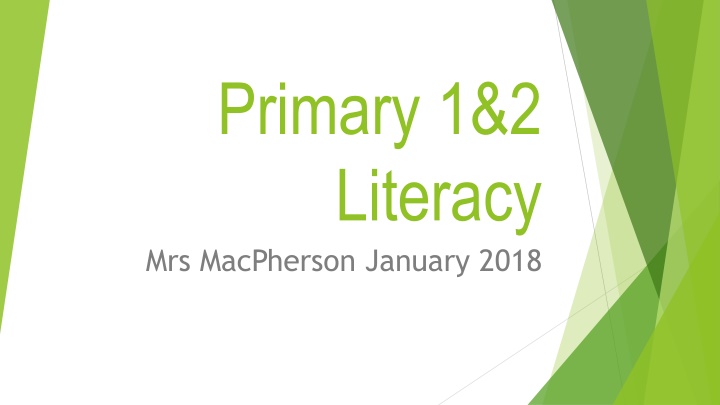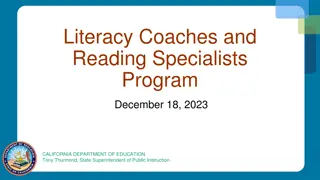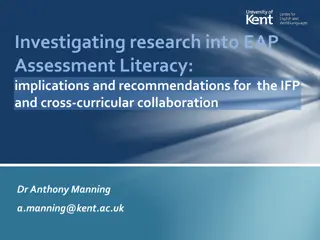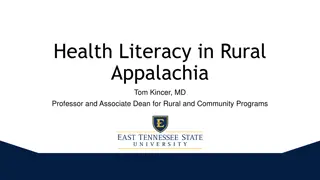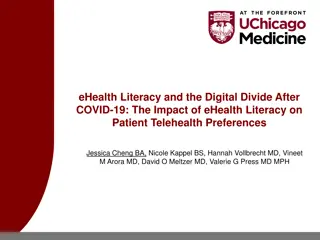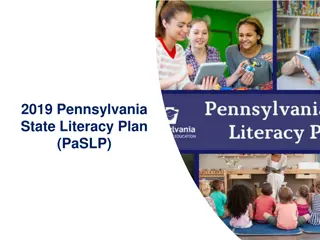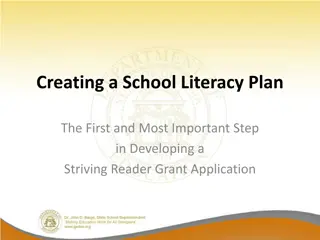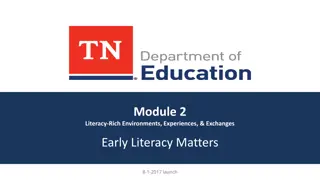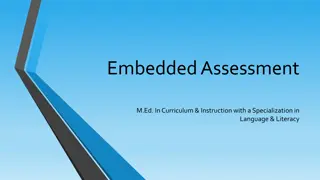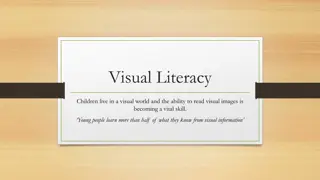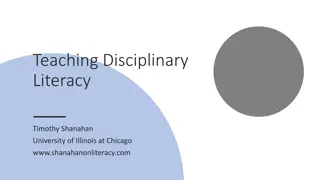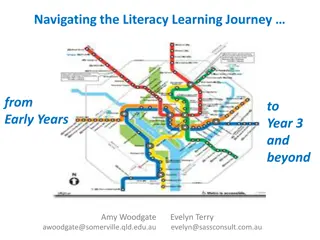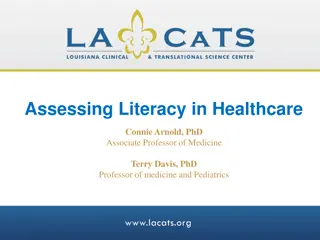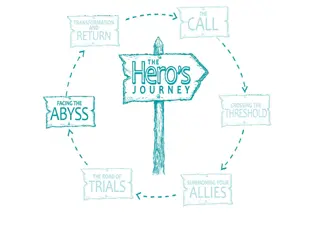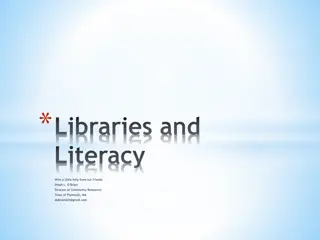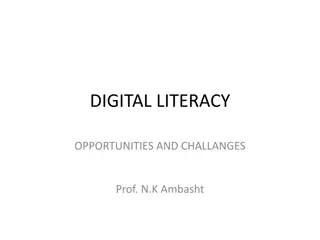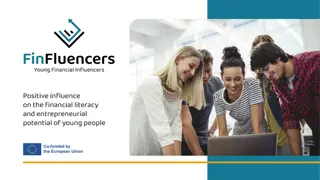Primary 1&2 Literacy
Literacy is crucial for a child's holistic development, enhancing language, communication, social, and problem-solving skills. In early education, children are immersed in a literacy-rich environment through listening, talking, reading, and writing activities. This program focuses on phonics, vocabulary, reading schemes, and various genres of writing to foster a strong foundation in literacy skills.
Download Presentation

Please find below an Image/Link to download the presentation.
The content on the website is provided AS IS for your information and personal use only. It may not be sold, licensed, or shared on other websites without obtaining consent from the author.If you encounter any issues during the download, it is possible that the publisher has removed the file from their server.
You are allowed to download the files provided on this website for personal or commercial use, subject to the condition that they are used lawfully. All files are the property of their respective owners.
The content on the website is provided AS IS for your information and personal use only. It may not be sold, licensed, or shared on other websites without obtaining consent from the author.
E N D
Presentation Transcript
Primary 1&2 Literacy Mrs MacPherson January 2018
Why Literacy? Literacy is fundamental to any child's development. Important for children to be immersed in a literacy rich environment e.g. develop language skills (EAL), communication and social skills, creativity and curiosity, negotiating and problem solving skills.
Literacy skills are developed through Listening and Talking Reading Writing. Literacy is taught as a stand alone subject at least 4 days a week and skills are enhanced and developed within and through other curricular areas.
Listening and Talking Skills in listening and talking are fostered through class and group discussions, detailed exercises, games, drama and in other areas of the curriculum. Children will give talks to classmates and will practise giving and following instructions.
Reading In Primary 1 and 2, children are taught sounds through our phonics programme Literacy Rich . This programme also includes the teaching of common words. Children learn to read using the Bug Club reading scheme, supplemented with library books and materials from other reading schemes. Children progress onto studying a variety of group novels, poems, play scripts and non- fiction.
Writing Children across all stages in the school will have experience of writing across different genres including, persuasive writing, creative writing and report writing. Whole school writing focus Ensure progression across stages Opportunities to moderate both in school and with cluster schools
Primary 1 & 2 Literacy Edinburgh Literacy Rich Programme Teaches children to read and write using phonics Block 1 Alphabet letters and sounds Combining these to create 3 letter words (CVC words) Sounding out CVC words Reading and writing some common words (tricky words)
Block 2 teaches consonant and vowel diagraphs sh, ch, th, wh ai/ay ee/ea igh/-y ou/ow oo/ew ou/ow au/aw children learn that two letters go together to make a sound segmenting ungluing the sounds in words e.g. sh-o-p, r-ai-n blending combining sounds back together to make a work e.g. shu-t, boa-t common words sentences introduced with capital letters and full stops
Block 3 & 4 Introduces consonant blends (sl, br, dr, gl, sc, st, sw, tw) the beginning of words Magic e rule (gate, white, pole, rule) Changes the vowel from short to long Dictionary skills (finding words and their meaning) Cooperative learning (dictation)
Reading Weekly reading books (phonics and comprehension based) Main resource Bug Club www.activelearnprimary.co.uk Reading CVC and tricky words Handwriting Cursive (start 2017) Formation of each letter introduced during Block 1 Continued throughout the year Encourage correct formation at all times Writing repeater
A typical Literacy Lesson Whole class start Learn new sound/tricky word (what s in the bag, visuals) Songs (Jolly Phonics), games, flashcards, ICT Children then break off into stations where they will have group teaching time and opportunities for play related activities 3 x stations approx. 12 minutes each. 1 station is teacher led. Activities may focus on handwriting, dictation, initial sounds, CVC words (word building, reading, writing) and tricky words (reading or writing)
